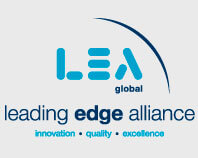Many businesses think 3D printing is too expensive to integrate into their operations. Yet today, there are many reasonably priced, consumer-grade 3D printers available, and the applications for this additive manufacturing process are seemingly endless.
With manufacturing right in the name of “additive manufacturing,” it’s obvious this technology impacts manufacturers; but it also affects my international businesses and those in the medical industry (e.g., 3D printed pills, organs, hearing aids). And that’s just for starters.
Below is a brief summary of some of the top tax and accounting implications of additive manufacturing:
- Research and development (R&D) opportunities: As we all know, most manufacturers will qualify for R&D tax credits, and implementing 3D printing into the R&D phase of your manufacturing process could produce additional opportunities to leverage this tax credit. Other significant advantages to integrating 3D printing include near-limitless flexibility in product design and development, as well as quicker implementation of product improvements.
- Reduced inventory-related costs: The use of 3D printers in the manufacturing process can drastically reduce the product manufacturing timeframe. This time savings could entice more companies to lean toward on-demand production and minimize inventory storage costs and other related expenses in the process.
- Elimination of supply chain levels: I already mentioned reduction or elimination of warehouse/storage expenses, but other links in a typical supply chain can be impacted as well. With a 3D printer, all product design, development, prototyping and production can be done at one location. In addition, some supply and delivery costs could be eliminated as well when companies can print their own parts.
- Impact on transfer pricing: Many companies integrate a vertical supply chain as a way to control costs and increase profits. Reducing supply chain levels will make it critical for companies to reassess their overall structure and their transfer pricing.
- Value-added taxes/goods and services taxes (VAT/GST) implications: In general, these taxes are levied at each level of a supply chain where value is added. Global VAT rates average 20 percent, so if levels of the supply chain are reduced or eliminated, governments may raise this already high indirect tax to bridge the tax revenue gap.
Learn More
For additional questions regarding additive manufacturing, please contact Alana Mueller or Rick Rosell by calling 770.396.2200.





